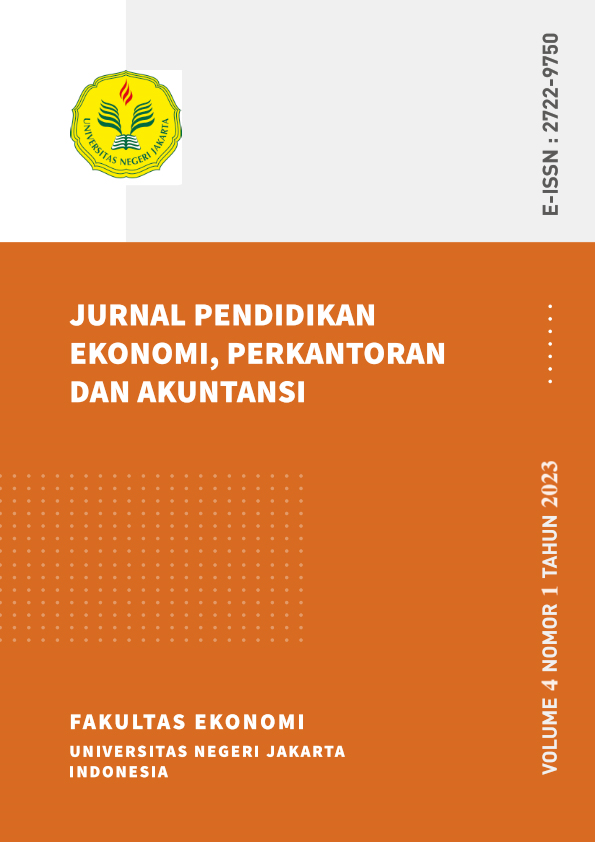THE DEVELOPMENT OF CONTEXTUAL-BASED AUDIO VISUAL LEARNING MEDIA ON TAXATION MATERIALS AT SMAN 38 JAKARTA
DOI:
https://doi.org/10.21009/jpepa.0401.16Keywords:
Contextual Learning, Audio Visual Media, TaxationAbstract
The research aims to develop learning media in the form of audio-visual based contextual on taxation material using the ADDIE model with five stages. The research stages are 1) The analysis stage is that there is a decrease in learning outcomes, the learning approach is less than optimal, and the learning media is not varied. 2) The product design stage, expert validation, and test instruments are declared valid and reliable. 3) Product development stage, and feasibility assessment by Media Expert I (71% and 88%); Media Expert II (80% and 91%); Material Expert I 92%; Material Expert II 90%. 4) The product implementation stage in the experimental class was given a pre-test and post-test. 5) The evaluation stage is the pre-test and post-test in the control and experimental classes. Using the n-gain test and effect size, the results showed that there was a high increase in learning outcomes in the experimental class with an average score of 0.73. While the increase in learning outcomes in the control class obtained an average score of 0.31. This means that there is a difference in improving learning outcomes between classes that use learning media and those without media. In addition, the learning media developed is effective in supporting the improvement of student learning outcomes on taxation material with an effectiveness value of 1.56









